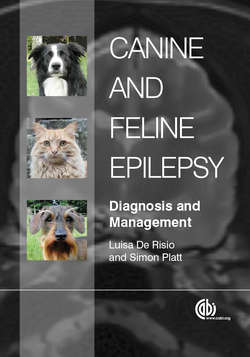Читать книгу Canine and Feline Epilepsy - Luisa De Risio - Страница 96
Hypernatraemia Overview
ОглавлениеHypernatraemia occurs when plasma sodium concentration is above reference levels (usually 155 mEq/l or mmol/l in dogs, and 162 mEq/l or mmol/l in cats) (Benitah, 2010). Occurrence of clinical signs depends more on rapidity of onset of hypernatraemia than to magnitude of change. Neurological signs generally occur when serum sodium levels exceed 170 mEq/l or mmol/l in dogs and 175 mEq/l or mmol/l in cats (>350 mOsm/kg) (de Morais and DiBartola, 2008b). Hyper-natraemia can result from water or hypotonic fluid loss, or excessive sodium gain (Box 4.5).
Sodium and its attendant anions account for approximately 95% of the osmotically active substances in the extracellular water. Therefore hypernatraemia is associated with hyper-osmolality (de Morais and DiBartola, 2008b).
Box 4.5. Causes of hypernatraemia (modified from de Morais and DiBartola, 2008b).
Pure water deficit (normovolaemic hyper-natraemia):
• Inadequate water intake;
• Animal unable to drink or no access to water;
• Primary hypodipsia;
• Diabetes insipidus (central or nephrogenic).
Hypotonic fluid loss (hypovolaemic hypernatraemia):
• Gastrointestinal;
• Vomiting;
• Diarrhoea;
• Small intestinal obstruction;
• Renal:
• Osmotic diuresis (mannitol infusion, hyperglycaemia);
• Non-osmotic diuresis (furosemide administration);
• Chronic renal failure;
• Non-oliguric renal failure;
• Post-obstructive diuresis;
• Third-space loss;
• Pancreatitis;
• Peritonitis;
• Cutaneous;
• Burns.
Excessive sodium gain (hypervolaemic hypernatraemia):
• Hypertonic fluid administration (intravenous hypertonic saline, sodium bicarbonate, sodium phosphate enema);
• Hyperaldosteronism;
• Hyperadrenocorticism;
• Excessive sodium chloride intake (e.g. salt poisoning).
